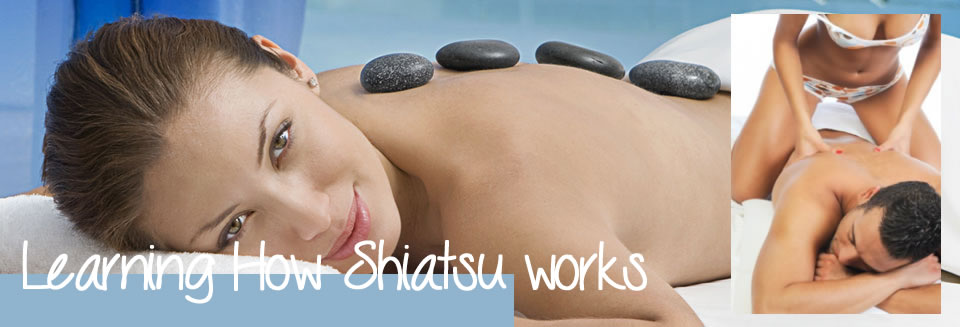Learn Shiatsu
Learning How Shiatsu can work for you
Bring in the new year - Learn Shiatsu's Introduction to shiatsu contains very important pointers that will help you learn the art of Shiatsu effectively; it also presents some important 'do's and don'ts' to consider when giving a Shiatsu treatment.
See commonly asked questions about Yoga
Therefore it is strongly recommended that you read it carefully before proceeding to Part One.
- Yin and Yang
- THE ABDOMEN TREATMENT
- Leg Pressure Points
- Preparing for a Shiatsu Session
- The Five Elements
- Shoulder pressure points
- THE STEP-BY-STEP SEQUENCE
- RESOURCES
- The origins of Shiatsu
- Techniques
- How to find the points
- POINTS TO REMEMBER
- How much pressure to use
- SELF-SHIATSU
- Choosing a school or practitioner
- SELF-TREATMENT
- Shoulders Treatment
- Vital organs
- Energy channels
- TREATING THE INDIVIDUAL
- DEVELOPING YOUR TECHNIQUE
- Energy in the hands
- Hara and breathing
- SELF-DEVELOPMENT EXERCISES
- Back of body treatment
- Front of leg pressure points
- Toe Treatment
- Tsubos
- Kyo and Jitsu
- Increasing your sensitivity
- Governing Vessel
- Forehead Massage

Other sites to look at
| capital-spas.co.uk |
| katyperrybeauty.co.uk |
How much pressure to use
Again, until you gain enough experience to be able to judge for yourself, there are a number of useful points to bear in mind. The best approach is to ask the recipient to let you know what he or she is feeling. Pressure should not cause severe pain, but merely a particular kind of acceptable tenderness in some sensitive places.
On the other hand, if your partner is not feeling much at all then you are probably being overcautious. Generally speaking, if you follow the postural guidelines overleaf, you will be surprised at how much of your body weight can be used without causing undue discomfort. Very strong, direct pressure should not be applied to actual joints: ankles, knees, hips, elbows and shoulders.
How much pressure to use
Again, until you gain enough experience to be able to judge for yourself, there are a number of useful points to bear in mind. The best approach is to ask the recipient to let you know what he or she is feeling. Pressure should not cause severe pain, but merely a particular kind of acceptable tenderness in some sensitive places.
On the other hand, if your partner is not feeling much at all then you are probably being overcautious. Generally speaking, if you follow the postural guidelines overleaf, you will be surprised at how much of your body weight can be used without causing undue discomfort. Very strong, direct pressure should not be applied to actual joints: ankles, knees, hips, elbows and shoulders.
Prices and Tuition
£50 for "First Session" Pilates or Pilates/Yoga or Yoga session, 1 1/2 -2 hours (where a consultation is involved). The first Pilates only or mixed Pilates/Yoga session is £50 for 1 1/2 - 2 hours. £30 for 1 hour £45 for 1 1/2 hours (Minimum rate is £45 for 1 1/2 - 2 hours unless it's a regular £30 1 hour session. ) £60 for 2 hours Other options are available, contact us if for other options. One-to-one rate/small group rates (2-4 clients, rate is the total payment, irrespective of number of participants.) Price reductions are negotiable for regular sessions.
